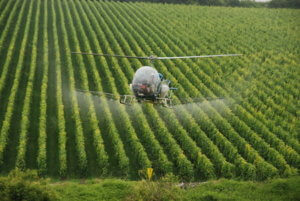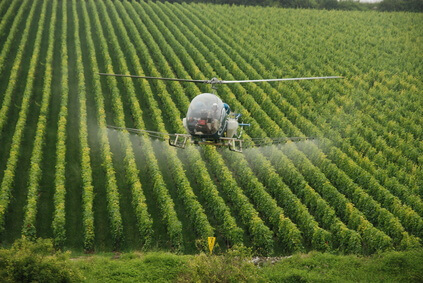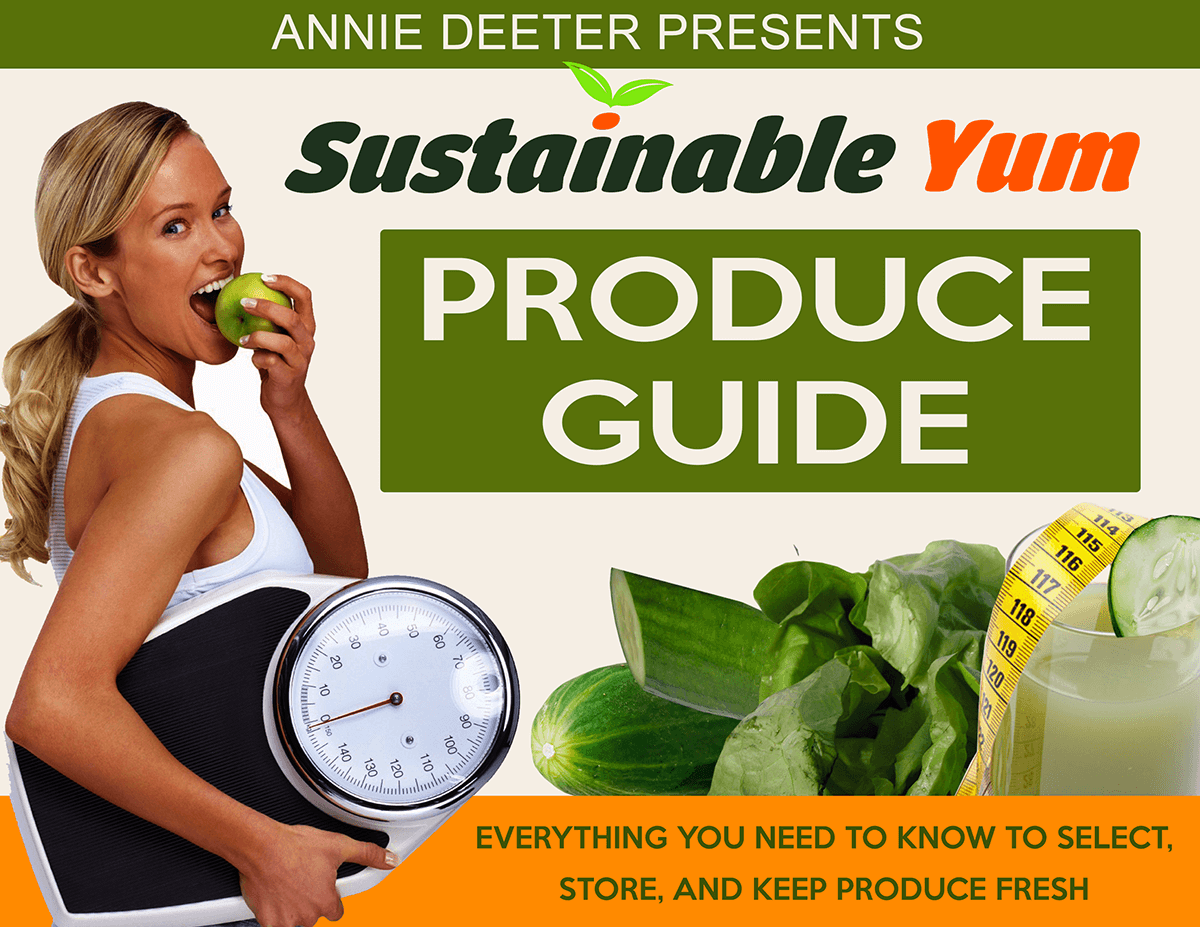Everywhere you look these days, it seems glyphosate (Roundup) is in the headlines. But how does it all fit together and what does it mean?

Glyphosate is just one chemical used in modern agricultural spraying.
Sure, people applying the poison as a weed-killer might be likely to suffer from exposures that can cause illness or even death. But, what about the rest of us who never touch the stuff?
Why is it ending up in our food even when we don’t buy GMO?
Bob’s Red Mill in Oregon is facing a lawsuit for having glyphosate contamination in both their conventional and organic oat products. This sounds crazy. How could glyphosate be in oats? They aren’t even a GMO crop, after all.
There’s a lot of ground to cover, but we’re going to do our best to sort it all out here. One step at a time, and bit by bit.
We’ll start with the landmark case out of San Francisco, where the decision everyone predicted would be overturned, wasn’t.
Monsanto Guilty as Charged Says Judge Bolanos
As the stunning verdict in the Roundup (glyphosate) case in San Francisco California is upheld by California Superior Court judge Suzanne Bolanos, even as she lowers the award to 78 million dollars from 289 million, the danger posed by Monsanto’s Roundup is now front and center in public view.
But this case was about a school groundskeeper who was applying the toxic spray to weeds in the local school yard for years. (We won’t even talk yet about the children in those schools, but at least they were not applying the spray).
This man was actually handling and using Roundup every day. His massive exposure has led to his cancer and dramatically shortened life expectancy. This is according to the jury, and now, judge Bolanos.
At present, some 4,000 additional lawsuits wait in the wings, all of them representing plaintiffs suing on grounds of serious and life threatening illnesses and all pointing squarely at Roundup (glyphosate) as the culprit.
But there’s a lot more to this story than those thousands of pending lawsuits.
Glyphosate in Children’s Breakfast Foods
The latest report from the EWG on glyphosate (Roundup) in children’s breakfast foods, raises a different kind of alarm. Particularly when the contamination seems to cross between GMO, Non GMO and organic product lines.
A fact that may at first seem to throw the study results into question, but actually raises more troubling implications. This is so once you understand how the modern agricultural system uses Roundup in different ways.
In their latest released report just this week, to follow up on the initial study completed in the summer of 2018, EWG has found that all 28 children’s breakfast cereal products tested contained glyphosate.
You can view the full chart of their findings here.
World Health Organization Ruling 2015 – Glyphosate is a Human Carcinogen
The 2015 World Health Organization decision that glyphosate was most likely a human carcinogen was met by Monsanto with rebuke and derision of the WHO and a demand to see their testing on Roundup.
Eventually, the WHO classification was upheld, but there was still no change to the way Roundup was being used in our agriculture. And, in fact, the whole “Non GMO Project Verified” market was born and fueled further by the WHO classification. But it didn’t change the way agriculture was operating.
There’s a lot of confusion in the marketplace, because Roundup is ubiquitous in the marketplace. That is, it’s not only a weed killer sold in hardware stores. It’s also one of the main products used in Monsanto’s biotech genetically engineered food crops.
Roundup Ready Crops
This produces food crops made “Roundup Ready” by gene splicing and viral introduction of Roundup toxins into the cellular matrix of the plants.
These plants are now known popularly in the marketplace as “GMOs” and many people attempt to avoid them by buying “Non GMO Project Verified” labeled products.
But here’s the problem. Even if we buy “Non GMO Project Verified” products, we are not avoiding the other way in which Roundup (glyphosate) is ending up in our foods.
This also helps explain why the numbers in the EWG study of children’s breakfast foods look the way they do.
The Roundup Knock Down – How Glyphosate Gets Into Grains
The Roundup Knock Down first gain notoriety in Germany after a national study concluded that Monsanto’s glyphosate ( the main ingredient in roundup) contaminated 99.6% of Germans.
This study happened to coincide with the world famous 500th anniversary of the German beer making industry’s “Reinheitsgebot” or purity law.
And, also in that year, a study concluded that glyphosate contaminated all of the 14 most popular German beers.
But before you assume that all those Germans were contaminated by drinking beer, we need to figure out how that beer got contaminated in the first place. (And no, it was not beer drinking that caused the population-wide glyphosate contamination.)
How Roundup Contaminated GMO Crops
Most people associate glyphosate contamination with GMO crops, where the crops are genetically modified to be glyphosate-resistant, and are then routinely sprayed with the herbicide that will kill weeds without killing the crops.
But GMO crops do not make beer. Malt, hops, yeast, and water make up a beer. In fact, the German “Reinheitsgebot” calls for beer to be made of only these four ingredients. So what is happening?
The “Roundup Knockdown” is happening.
Manufacturers use barley to make malts for beer. And barley is one of the most heavily glyphosate contaminated crops in the U.S. All thanks to the practice of spraying the crop just prior to harvest with massive amounts of Roundup.
However, let’s not limit this ‘farming method’ to just barley. The United States uses this method on almost all the cereal grain crops in the country, and, until 2016, in Germany, too.
What the Roundup Knockdown is and Why You Need to Know
Many wheat and cereal grain farmers use the “Roundup Knockdown” at harvest to desiccate or dry out the crop. This method forces the seed heads to make one last surge before they die.
Apparently, this practice can increase the weight of the final crop yield by 2 or more percent. Of course, Monsanto also promoted this as a weed control method, as you can see in the “Preharvest Staging Guide” found in the resource links at the bottom of this article.
This “staging guide” also recommended this practice to a long list of crops. The list includes wheat, barley, oats, flax, peas, lentils, soybeans, and dry beans.
Of course, in doing so, you have just dowsed an entire food or animal feed crop in a chemical which was patented as an antibiotic in 2010. It is also known to cause antibiotic resistant bacteria, kidney disease and infertility, and is now strongly implicated in thousands of cases of non-Hodgkin’s lymphoma.
There’s one more problem… glyphosate applied in this way cannot be removed from the crop once it has been applied. The food will contain whatever amounts of the contaminant are sprayed on it using this method.
How much glyphosate are we talking about?
It turns out, the glyphosate in those contaminated barley crops was enough to actually kill the yeast in German brewing houses.
That was actually one of the things that led to the discovery of this practice and its consequences.
So we could say, it was German beer that helped uncover the practice of the Roundup knock down. Germany has since banned this practice. And as of spring, 2018, Germany is in the process of banning Roundup altogether.
And They Aren’t Alone
There’s a wave of countries banning the use of glyphosate around the globe. This is aside from Germany announcing they are finalizing the language of their ban of glyphosate in April of 2018.
As reported at the Organic Consumers Association
According to Baum, Hedlund, Aristei & Goldman, a U.S. law firm representing hundreds of plaintiffs suing Monsanto for allegedly causing their cancer, the following countries have banned or placed restrictions on the use of glyphosate:
- Belgium: In 2017, the Flemish government banned individual use of glyphosate and voted against reliciensing glyphosate in the EU. The country was one of six EU member states to sign a letter to the EU Commission calling for “an exit plan for glyphosate.”
- Bermuda: The island outlawed the private and commercial sale of all glyphosate-based herbicides.
- Colombia: In 2015, the country forbid the use of glyphosate to eliminate illegal plantations of coca, often used to make cocaine, due to concern that the herbicide causes cancer. However in 2017, the country reinstituted its controversial fumigation program. But instead of using aerial fumigation, people now spray glyphosate manually from the ground.
- Netherlands: Dutch officials have banned all non-commercial use of glyphosate.
- Sri Lanka: In 2014, Sri Lankan President Mahinda Rajapaksa mandated an all-out ban on glyphosate, following a studylinking Roundup to Fatal Chronic Kidney Disease (CKD), the second-leading cause of death among males in the country. Sri Lanka was the first country to issue a nationwide ban on glyphosate.
- El Salvador: Passed a law banning glyphosate, citing the same study linking fatal chronic kidney disease to Roundup.
- Middle Eastern countries, including Saudi Arabia, Kuwait, Qatar, Bahrain, Oman and the United Arab Emirates, have stopped glyphosate use.
- France: President Emmanuel Macron announced in Novemenber 2017, an outright ban on glyphosate, to take effect “within three years.”
More Trouble for Monsanto
As more evidence comes to light, and people start to put the pieces together, it’s quite possible that there is a tidal wave coming. And it’s going to be a tsunami of epic proportions.
It has been building for all the decades that the “world’s most popular weed-killer” (aka herbicide) has been engineered into food crops. Farmers and Home Gardeners applies this herbicide across residential and commercial landscapes. Farmers also sprays this chemical on crops as a pre-harvest desiccant across the planet.
All the while proclaimed as the “safest herbicide on the market”.
Which begs the question, “Is there a safe herbicide?”
There really is nothing new under the sun…
The history of the chemical industry is full of examples of ‘good poisons’. They turned out to be, well, just poison.
And in ways that were far more devastating than anything anyone had anticipated.
And as more and more people are now aware, Monsanto (Now Monsanto/Bayer) manufactured (and still are) many of these, including DDT and Agent Orange just to name two better-known examples.
Let’s hope a wave of change is coming in time to prevent irreversible damage to a planet already under siege. And they’re coming from more directions than we can count.
Resources:
https://www.cnbc.com/2018/10/23/judge-upholds-verdict-that-found-monsantos-weed-killer-caused-cancer.html
https://www.ewg.org/childrenshealth/glyphosateincereal/
https://www.ewg.org/release/roundup-breakfast-part-2-new-tests-weed-killer-found-all-kids-cereals-sampled
https://www.organicconsumers.org/news/germany-13-other-countries-say-no-glyphosate-what-about-us
http://healthytraditions.com/glyphosate-tested/




Leave A Comment